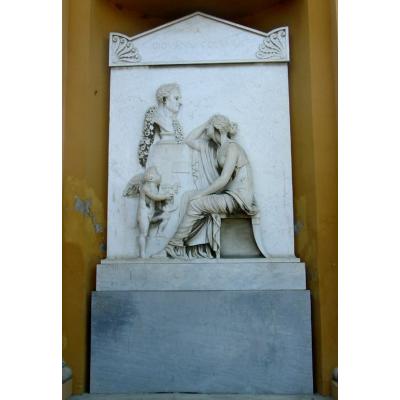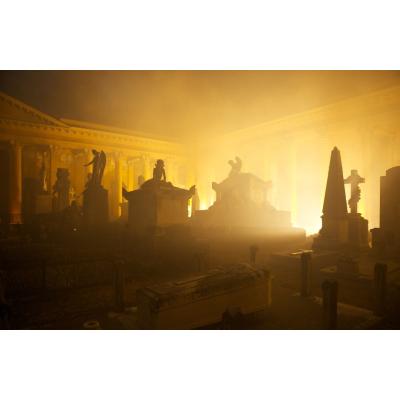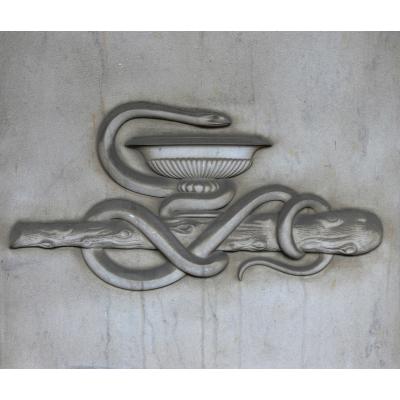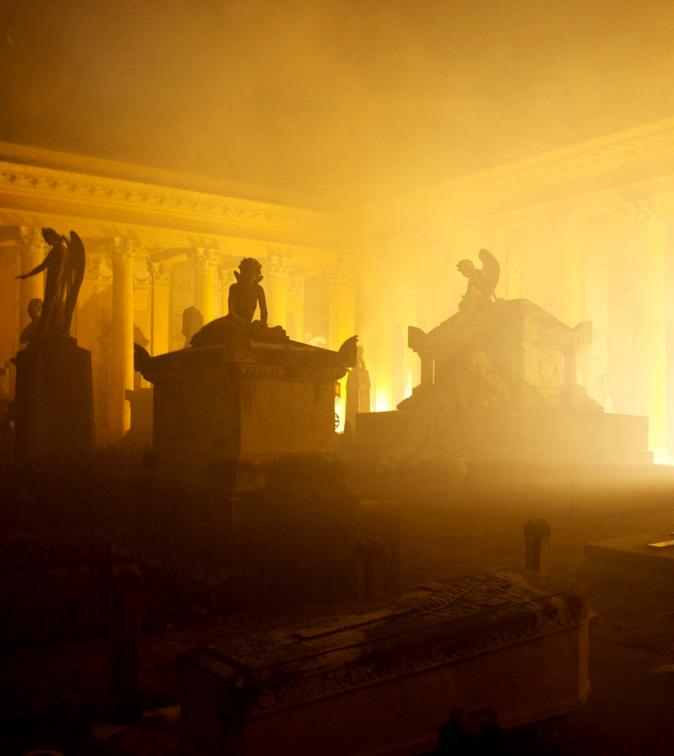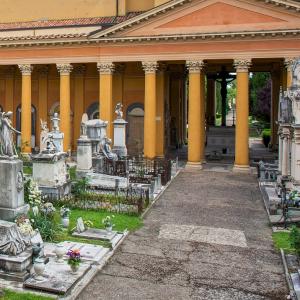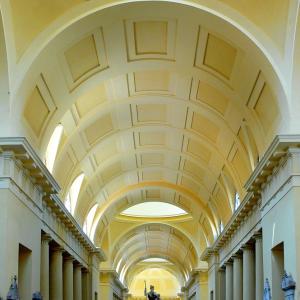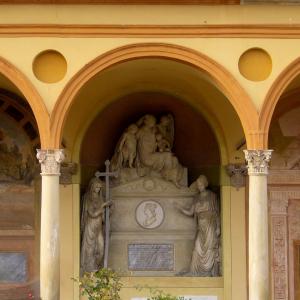Schede
In the collective imagination, cemeteries are places of art and collective memory, connected to family but also to the mystery of death and loss, to the night time and to what can be found after death. The Certosa Monumental Cemetery, since its foundation in 1801, has been a source of inspiration for poets and men of letters. Many of them have left written records of their visits to the Certosa, in which there are some references to weird stories, mysterious legends or uncommon practices. In the symbolic universe of the artworks of the Certosa there are esoteric aspects; for example the presence of sphinxes (the main points of the Masonic symbolism), but also lanterns, caduceus, and the best known symbol of Eternity – the ouroboros – the snake that bites its own tail. The history of the cemetery itself records episodes of ghosts or fantasy stories, about dead people who talk with the living through the monuments. Finally, Anna Bonazinga D’Amico (1830-1906) the "most famous clairvoyant of the XIX century", is buried in the Certosa, who held the "Medical magnetic Cabinet” where the sleepwalker gave consults for many years. Pietro D’Amico’s wife – notorious enthusiast of mesmerism - Anna had a deserved fame, so that in Certosa, succeeded in having two funeral monuments (the only woman from Bologna to have it). The path was realised for the exhibition “La Grande Magia”: MAMBo - Museo d’Arte Moderna di Bologna, from October 20, 2013 to February 16, 2014.
Itinerary
1 – Tomb Guidi – 1st entrance Cloister. The monument is dedicated to Giovanni Guidi, who died in 1818. The artwork is a typical example of painted memories realised during the napoleonic age, while the Egyptian iconographic is very rare. The rich symbolism refers to the moral quality of the defunct and among them the Ouroboros appears – the snake that bites its tail – symbol of Eternity.
2 – Tomb Legnani – 3rd Cloister. The painting is dedicated to Girolamo Legnani (d. 1805). The Egyptian style expresses the spread of Giovanni Battista Piranesi’s models of XVIII century, and many of the symbols in this painting are typical of Masonic culture.
3 – Giuseppe Ceri, Quirico Filopanti – 7th Cloister. In the newspaper "Ehi! Cha`l scusa…" of 1884, the engineer Giuseppe Ceri is imagined in this Cloister, surrounded by bats who fly around his hat, in a night in which the moon illuminates the walls of the Certosa.
4 – Olindo Guerrini (1845-1916) alias Lorenzo Stecchetti – Sala del Colombario. The simple headstone dedicated to Guerrini family recalls one of the most important figure of satirical culture from Bologna. In his work "Song of hate" (Canto dell’Odio dedicated to a refined lady who didn’t host him, imagines to uncover her tomb, cursing her.
5 – Tomb Frassetto – Carducci field, Muro di cinta lungo il canale. The monument is dedicated to the well-known anthropologist Fabio Frassetto (1876-1853) and to his son killed during the Second World War. The sculptor Farpi Vignoli represents them in an eternal dialogue about death, shown by the skull in the father’s hand.
6 – Giosue Carducci (1835-1907) – Carducci field. In 1879, Carducci, Italian poet winner of the Nobel Prize for literature, wrote the ode "Out at the Certosa of Bologna" (Fuori dalla Certosa di Bologna), in which he remembers the history of the place, and at the end the dead people speak to the living with this words: “Oh! Amatevi al sole! Risplenda su la vita che passa l’eternità d’amore” (Oh! Love each other in the sun! Let eternal love shine on this life)
7 – Recinto dei Cappuccini – Sala II. After 1801 some monastic cells have been used to expose some skulls, identified with tags. This peculiarity shocked many foreign travellers such as Lord Byron who explain how the Guardian had shown one to him: “This is our brother Desiderio Berò, who died at forty years old, one of my dearest friends. I asked his head to his brothers and they gave it to me… There it is with its teeth perfectly conserved. He was the most clever brother that I’ve ever met”. Later, this place was used to collocate tombs and monuments.
8 – Anna Bonazinga and Pietro D’Amico – 8th Cloister, Chiostro Annesso al Maggiore. Husband and wife were famous academics of Mesmerism, in fact there are many publicity insertions on periodicals and national newspapers of the time. For each consultation the “Sleepwalker” should have “confortato con schiarimenti e consigli necessari, e rimanendo il tutto nella massima segretezza, sicchè ogni persona potrà lealmente darsene e sperare di ottenere un felice risultato”. Anna D’Amico (1830-1906) is the only woman with two different monuments in Certosa.
9 – Francesco Albergati – Chiostro Annesso al Maggiore. In 1845 Bernardo Gasparini publishes “Due notti alla Certosa di Bologna", in which he describes two night's encounters with ghosts of famous citizens. Among them he meets the marquis Francesco Albergati, who wishes to tell him about the suicide of his wife, stating he’s not guilty.
10 – Tomb Colbran I Rossini – Chiostro Maggiore. Jules Janin, renowned french critic of art of XIX century, visited Bologna in 1838. Here he met the composer Gioachino Rossini, his dear friend. He informed him about the visit to the Certosa and the meeting with the Certosa keeper, who was looking forward to Gioachino`s death. In that way, hosting Gioachino`s tomb, the cemetery would have become famous all around the world.
For the dictionary of funerary symbols click here


